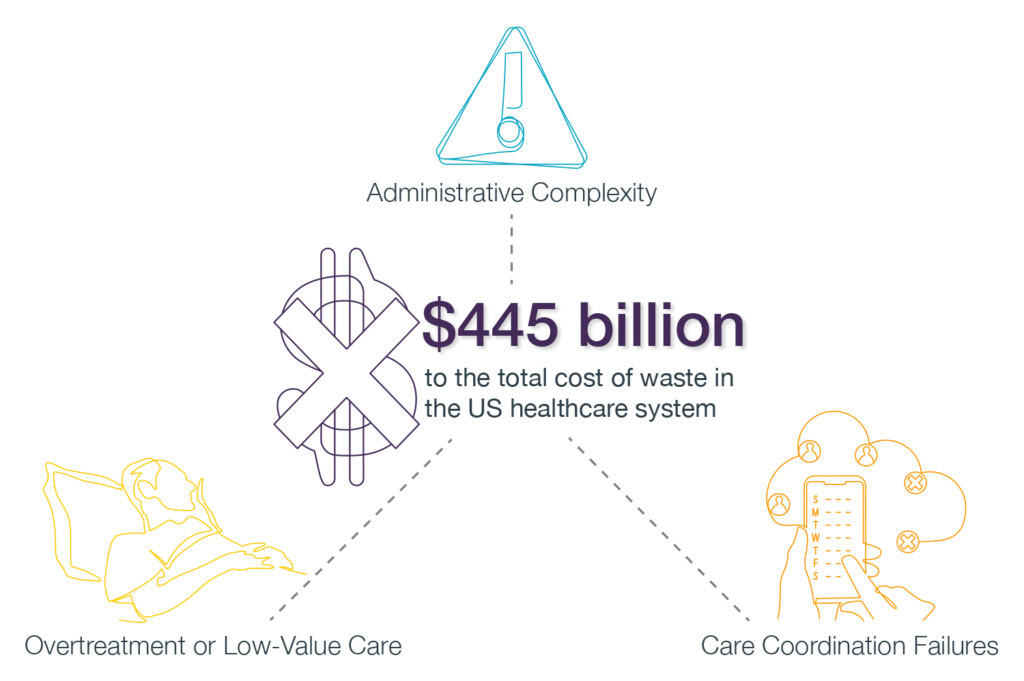Live Event
Real solutions from experts who've moved the needle on burnout
Register NowTABLE OF CONTENTS

Health system leaders are often faced with difficult decisions, but having data available to inform those decisions makes the process a bit easier to digest. As it turns out, on-call schedules are a surprisingly rich, but mostly untapped, source of informative data.
These schedules contain detailed information that can provide deeper insight into a health system’s inner workings on a range of matters. The problem is, manual scheduling solutions like Excel or paper schedules don’t allow for easy data mining, so they make it next to impossible to generate any kind of useful analytics. But for hospitals and health systems that use automated scheduling platforms, data is much more readily available.
Let’s take a look at the critical data scheduling systems possess and how analyzing the on-call schedule can provide actionable insights.
In healthcare, data silos are more than just a minor annoyance. For example, if a health system has to piece together segments of data from hundreds of different solutions to get some kind of visibility into system-wide activity, it can be exceedingly difficult to use that data to make meaningful process improvements. In fact, silos in healthcare don’t just impact how data is understood—they can be costly. A 2019 study estimated that care coordination failures, administrative complexity, and overtreatment or low-value care contributed as much as $445 billion to the total cost of waste in the US healthcare system from 2012 to 2019.1 Some of these shortcomings can be attributed to suboptimal data and/or analytics capabilities that prevent decision makers from getting the “full picture.”

For larger health systems in particular, top-down decisions and policies implemented by system leadership have a trickle-down effect on many people across the organization. Because they are not typically made using enterprise data, these decisions may not universally benefit a health system. This problem of siloed data rings true for any health system that uses multiple scheduling solutions. Leadership may be able to see scheduling data for individual departments, but it’s much harder to get data that accounts for schedules across the entire system. An advanced solution like Lightning Bolt Scheduling—one that can be deployed at an enterprise level—houses valuable data that can lead to better insights and better performance management. These insights include:
Having access to richer scheduling data from across the health system will help leaders make better decisions that more closely align with the unique operational workflows of each department. Here are just a few examples of how.
Provider wellness is essential not just for the providers themselves, but also for the quality of care that patients receive. Enterprise scheduling analytics can reveal useful insights about on-call shift distribution among providers, showing which individuals might be working their preferred shifts more or less than others. An advanced scheduling solution can equalize distribution of these on-call shifts, ensuring greater balance and equity among all shift types. What’s more, scheduling data of this kind can be regularly evaluated to uncover instances where an individual provider’s workload might put them at greater risk of burning out or even leaving.
At the system level, other analytics can help identify staffing shortages in specific departments. If you’re short staffed, a scheduling solution can be used to create more balanced schedules, but providers will inherently be overworked. Lightning Bolt has long used in-app wellness surveys to help health systems zero in on the providers who may be struggling with more acute levels of stress. Survey data can be analyzed so that each provider’s level of satisfaction can be monitored and changes can be made to their schedule if needed.
Departed employees’ schedules can also be analyzed to reveal common trends that might have contributed to burnout or dissatisfaction, even if they chose not to partake in wellness surveys. There are plenty of examples, but maybe a provider got too many weekend call shifts, or perhaps they didn’t get as many well-known “high traffic” shifts and thus felt undervalued and underutilized. Past schedules, as well as the frequency with which they asked for schedule changes or time off, can provide useful insight into possible sources of frustration. This data is essential for making adjustments to the scheduling system’s rules so it can auto-generate better schedules moving forward.
Knowing when to hire new staff and providers lays the foundation for a well-supported workforce. On-call analytics can highlight schedule gaps, and in Lightning Bolt’s case, when the system has to break rules or preferences to fill these holes, it sends an alert. This capability can aid leadership in making decisions for the future by helping them to more accurately forecast staffing needs. For example, if a gap consistently has to be filled by over-scheduling a provider each month, it’s a clear signal that it’s time to consider making an additional hire. Or, if historic data showed an influx of patient calls around certain time periods last year—maybe around the holidays or toward the end of the year when patients are trying to work procedures in before their deductibles reset—your system can prepare in advance to hire more providers or adjust the on-call schedule to meet anticipated demand.
If a health system uses multiple solutions to handle on-call scheduling, different departments may struggle to understand the big picture of how their personnel and other resources are deployed each year. But with an enterprise approach, you won’t be piecing information together from different systems—schedules and all of their associated data live in one place.
Utilizing resources appropriately is essential to effective care delivery, and it goes without saying that people are your most important resources. Scheduling data can be used to highlight consistent gaps in on-call coverage, and with technology like Lightning Bolt, staff can also be flexed between departments based on the ebb and flow of patient demand. This ensures consistent patient access to an on-call provider no matter when they make contact.
The concept of better resource utilization can also be applied to things like exam rooms, ORs, and other equipment. By integrating these resources into the scheduling system and tapping into Lightning Bolt’s data, administrators can easily analyze utilization patterns for some of their most high-value resources to make them more readily available to the care team.

In addition to the more widely known benefits of deploying on-call scheduling enterprise-wide for providers and schedulers, administrators and decision makers can reap analytical benefits as well. Detailed reports and analytical insights into things like workflow efficiency, provider wellness, and resource utilization can equip your organization’s leaders with better data to make better decisions that affect providers, patients, and everyone in between.
An automated scheduling solution like Lightning Bolt has these capabilities baked in from the start, meaning these insights are readily available to all customers. Contact us today to learn more, or schedule a demo to see Lightning Bolt in action.
Sources
1 Waste in the US Health Care System: Estimated Costs and Potential for Savings, National Library of Medicine: https://pubmed.ncbi.nlm.nih.gov/31589283/